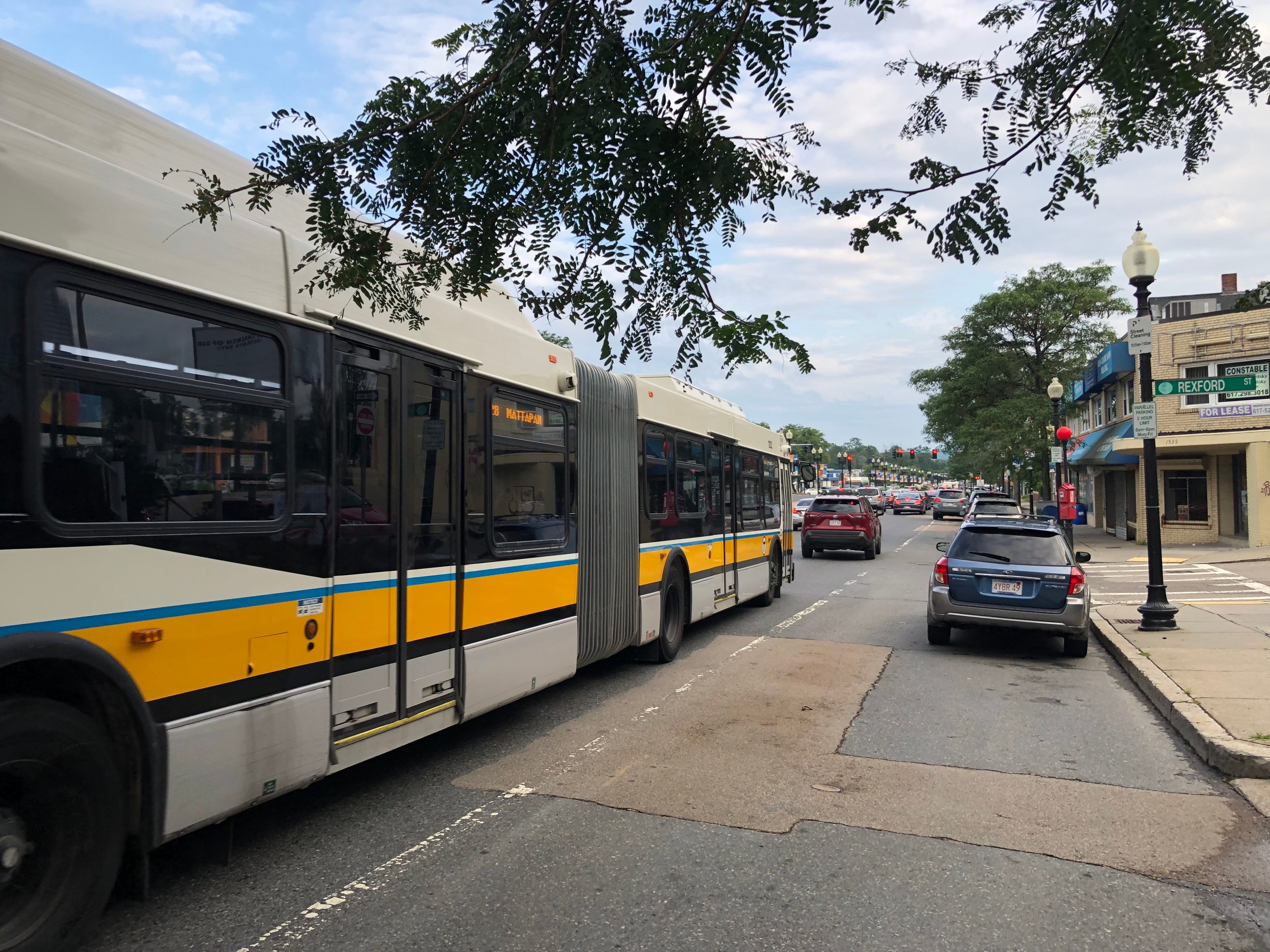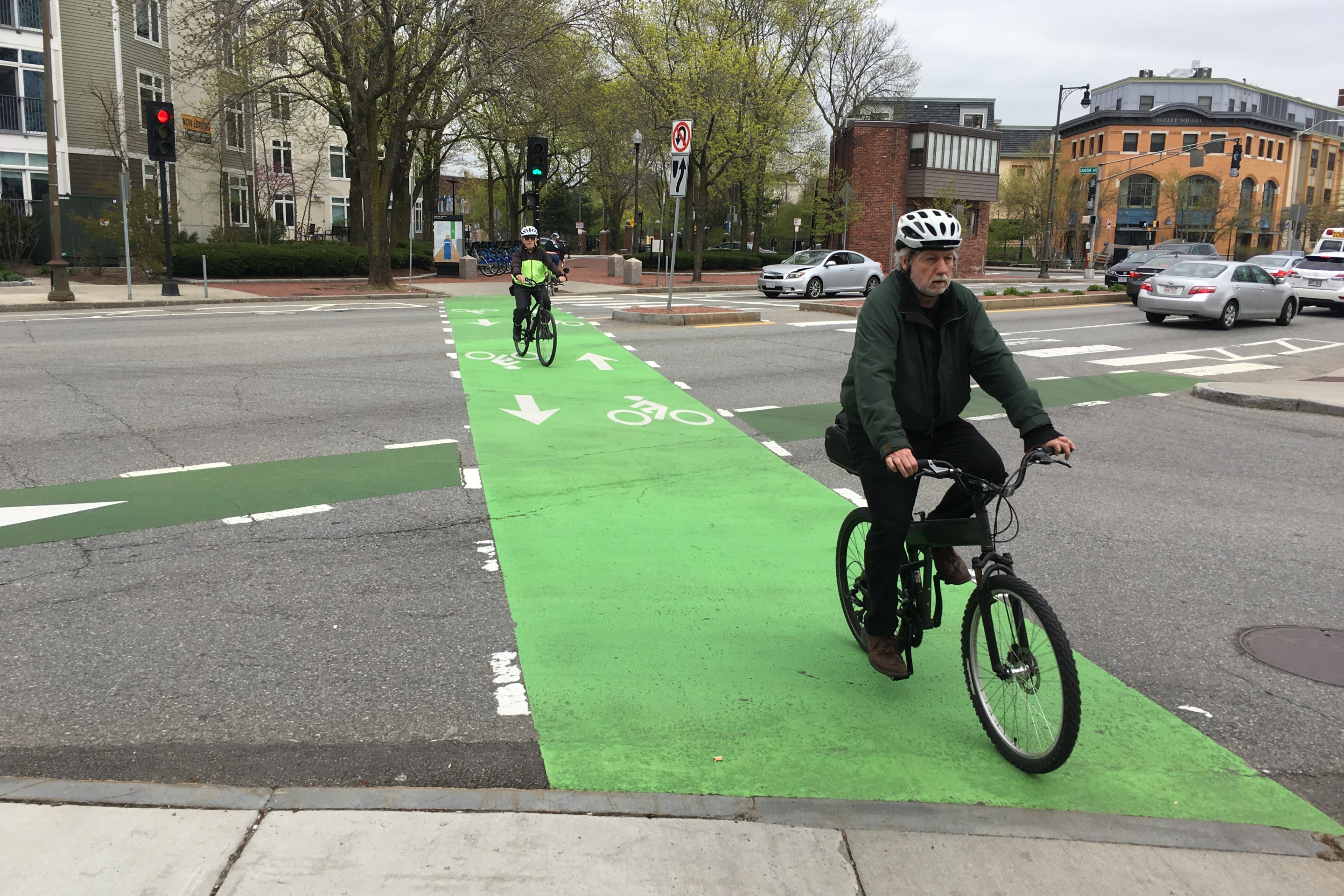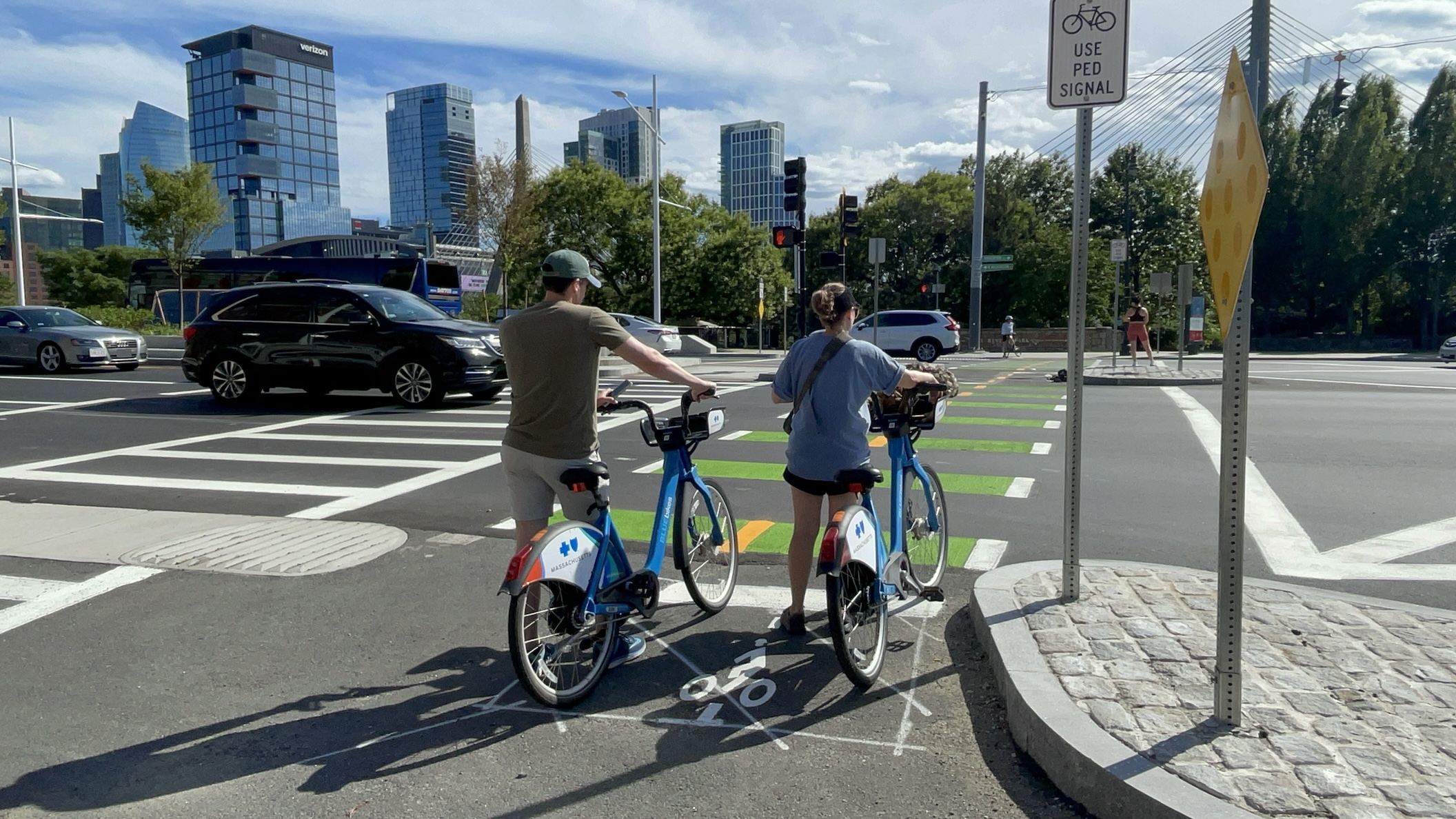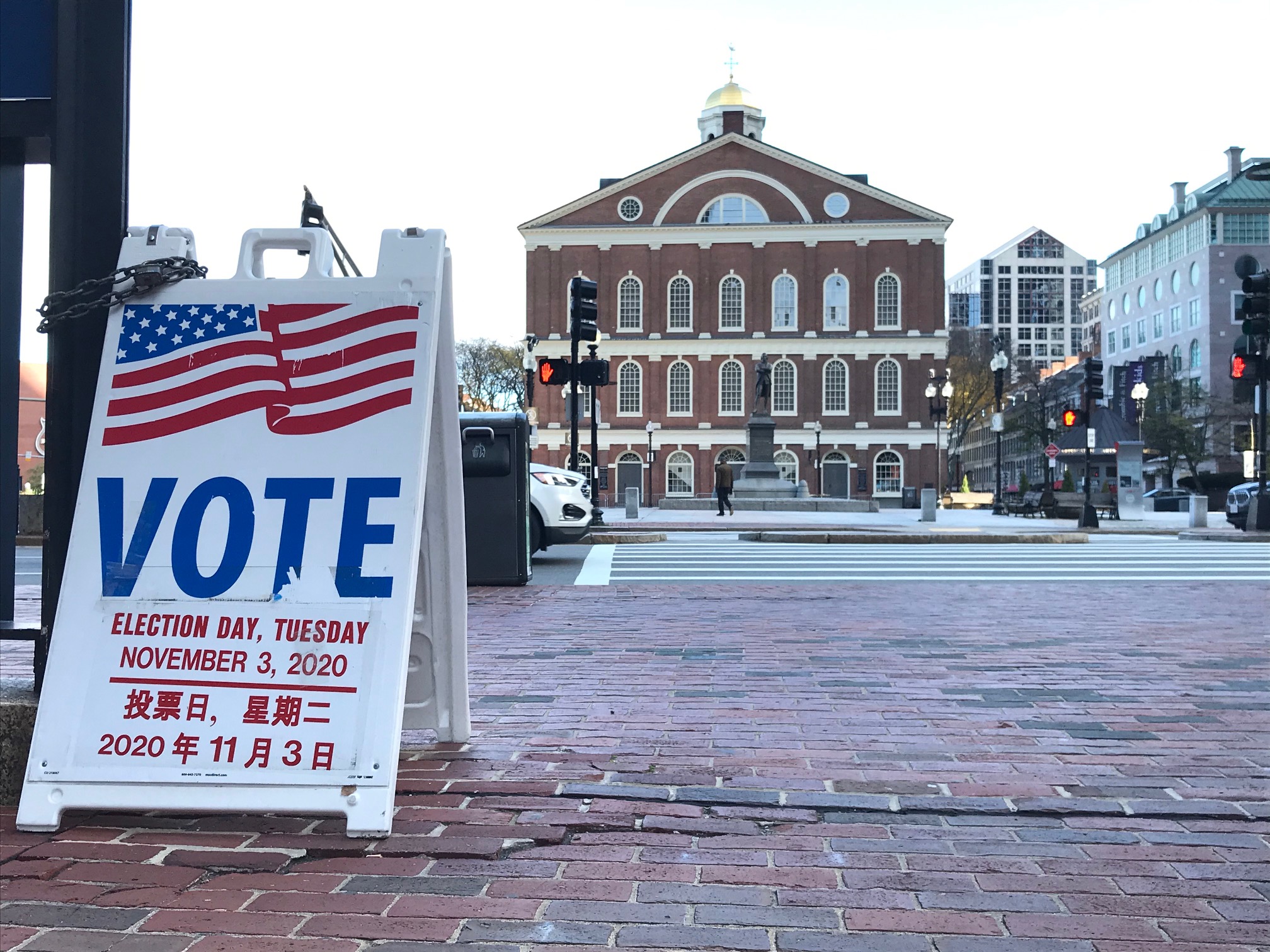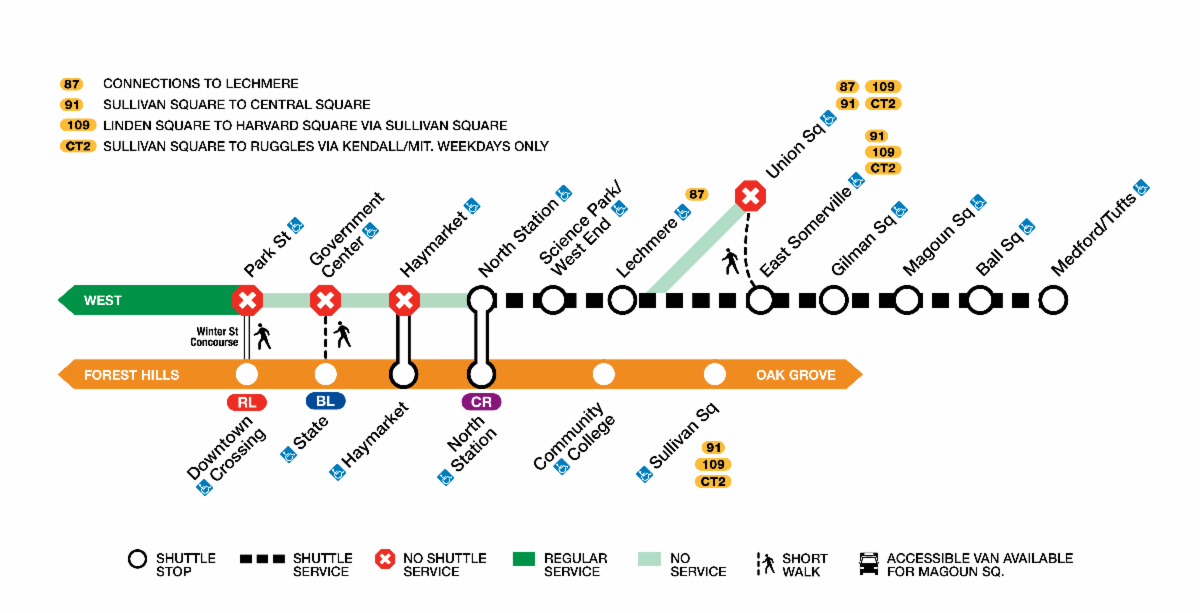For over a year, City of Boston planners have been hosting dozens of meetings with residents of Mattapan, Roxbury, and Dorchester about the city's plans to speed up transit service with a dedicated busway on Blue Hill Avenue.
In Mattapan, where decades' worth of top-down transportation decisions from downtown Boston have saddled the neighborhood with long commutes, traffic congestion, and high rates of asthma, there's been a healthy amount of skepticism for City Hall's ambitious plans.
At an open house for the project that the city hosted near Mattapan Square on Monday evening, most of the dozen or so attendees were car owners who favored the status quo over the city's proposed "multimodal corridor".
But the status quo option won't reduce traffic congestion, and it won't deliver any time savings to the thousands of bus riders who get stuck in traffic on Blue Hill Avenue every day.
At Monday's open house, we only found one attendee who was also a regular bus rider – and she was also the one attendee we met who was fully in favor of building center-running bus lanes on Blue Hill Avenue.
The slow bus to Mattapan
The 28 bus, which runs along Blue Hill Avenue from Mattapan Square on its way to Ruggles, is the busiest bus route in New England.
In addition to the 28, several other high-ridership bus routes also use portions of Blue Hill Avenue, including the 22 and the 31.
The MBTA and City of Boston estimate that over 37,000 riders get on and off buses on Blue Hill Avenue on a typical weekday, which makes it a busier transit route than any of the individual branches of the Green Line.
Under the MBTA's proposed bus network redesign, these routes would generally remain in place, but the 28 and the 22 lines would both get extended north into the Longwood Medical Area.
Because it’s such as busy transit route, and because 4 out of 5 residents in the neighborhoods along Blue Hill Avenue identify as Black, improving bus service on this particular street is critical to addressing structural inequities in the MBTA’s transit network.
A pre-pandemic analysis estimated that Black bus riders spend, on average, 64 more hours per year aboard MBTA buses compared to white bus riders.
By offering buses a bypass around traffic congestion, the city's proposed center-running bus lanes could reduce the time it takes to ride a bus from Mattapan Square to Grove Hall by up to 30 minutes during rush hours.
Collectively, that would give back thousands of hours' worth of time for Mattapan's bus riders, every single day.

Car owners dominate neighborhood meetings...
According to data from the U.S. Census Bureau, roughly one in three households in the Census tracts that border Blue Hill Avenue between Mattapan Square and Grove Hall do not own a car.
But during the past year's neighborhood meetings for the Blue Hill Avenue project, car owners and their concerns – like the availability of city-subsidized parking – have dominated conversations with planners.
At their community meetings on the project, which have been happening on a near-monthly basis, City of Boston planners have been polling participants about their primary mode of travel along Blue Hill Avenue.
At most of those meetings, people who answered "driving" have made up more than half of the audience, and frequently outnumbered transit riders by a 2-to-1 margin.
But even car owners don't like traffic
On Monday evening, the City of Boston and MBTA hosted another in-person open house for the project at the Sgt. William E. Carter American Legion Post in Mattapan Square.
Attendance was light – roughly half of the people in the hall were planners and consultants working for the city or for the MBTA – and it was a struggle to find anyone there who regularly rode the bus.
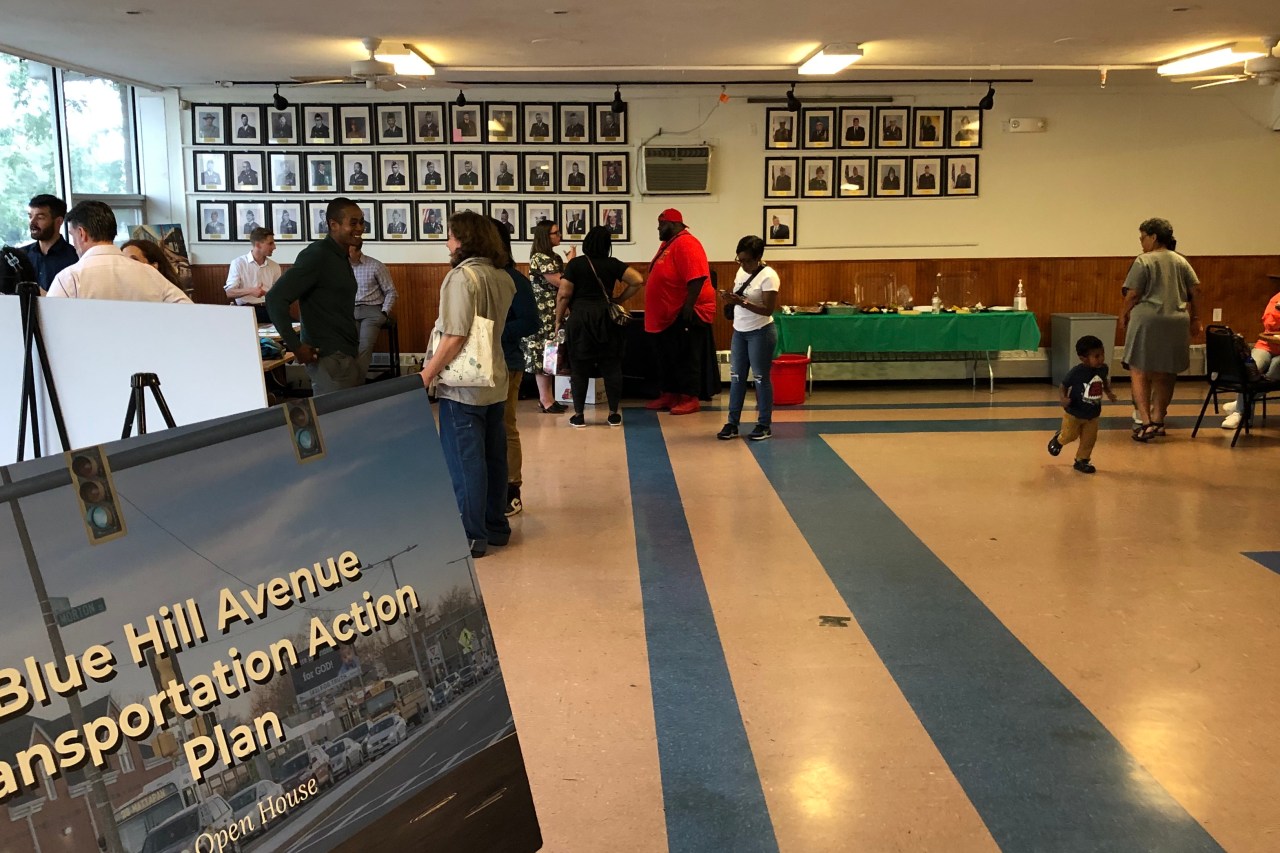
"I don't mind change, but this proposal doesn't make sense," said Russell Murphy, a Mattapan resident.
Murphy acknowledged that the city's goal – to reduce traffic by providing more reliable bus service – was a worthy one.
"There is too much traffic," he agreed. "But the T is not even functioning right. They make it easy to get downtown, but not to other parts of the city where I want to go... If it takes two different buses, waiting 30 minutes for each one, I'm not doing that. I'm going to drive."
At another table, Fatima Ali-Salaam, another Mattapan resident, agreed that Blue Hill Avenue's traffic is a problem worth tackling.
"Most of the traffic doesn't originate in the City of Boston," she told StreetsblogMASS. "It comes from Milton and further out, from people avoiding the traffic jams on I-93. It wasn't designed for this amount of traffic. And the problem is, the people who live here take the brunt of the problems."
When I asked her if she supported the city's bus lane proposal, Ali-Salaam rolled her eyes a little bit, but she didn't explicitly say "no."
"They have to do something," she said.
'We should share the street'
Near the end of the evening, I was able to finally find someone who regularly rides the bus along Blue Hill Avenue.
Denise Young lives near Mattapan Square and frequently rides the 31 bus to Forest Hills.
She told me that she frequently gets of at Walk Hill Street and walks the rest of her way home, because riding the last half-mile on the bus would be slower.
"I like the bus lanes. I want to see bike lanes, better walking paths. People say we don't need them, but we should share the street," Young told StreetsblogMASS. "We could have cafe seating in the square – places for people to sit and enjoy a meal."
The City of Boston's planners at Monday's meeting acknowledged that it's been challenging to get bus riders to sacrifice more of their time to come to a public meeting.
So they're also making extra efforts to reach out to neighbors in other venues – including bus stops along Blue Hill Avenue.
Earlier this spring, multilingual teams from the LivableStreets Alliance surveyed riders from dozens of bus stops along Blue Hill Avenue, and gave participants $5 gift cards to local businesses to thank them for their time.
When asked what one thing would make their trips "more ideal," 32 percent of respondents asked for "more consistent buses" and an additional 24 percent asked for "trips less affected by traffic."
